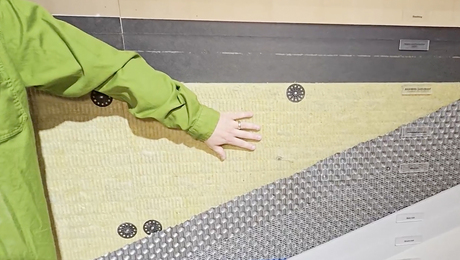20 Considerations that help a project run smoothly
A seasoned architect offers up common-sense ideas for keeping any job predictably on track

In building and renovation, few rules hold true all the time. However, a number of useful notions lead to predictable outcomes most of the time. Unfortunately, many of these notions are forgotten when we concentrate on making ideal decisions throughout the course of the work. We lose sight of how each decision relates to the bigger project picture.
The following is a list of some commonsense ideas that almost always have a positive impact on a construction endeavor.
Maintain the right attitude
• Building anything is an act of joy and optimism. It’s also a learning experience. Anxiety is a normal part of that experience, but anxiety must not control the outcome of the work.
• The only adversarial relationship that is productive on a building project is the one that everyone should have with the artistic, technical and financial challenges that the work itself presents.
• Excellent people make mistakes. Expect that they will continue to do so.
• Building a house is not an industrial process. It is hand labor, at a site, involving dozens of components that have to work and fit together as well as possible. Expectations for the quality of the work should reflect these characteristics.
Choosing a design consultant and a builder
• When selecting a professional with whom to work, the first criterion should be character; the second, competence; the third, dedication.
• Clients are in the difficult business position of dealing with people who know more about design and construction than they do. In this vulnerable situation, the best strategy is to choose professionals of unquestionable integrity.
• To secure the greatest benefit from the knowledge that consultants and builders possess, allow them do their work in the manner that their training and experience have shown will be most effective.
• Clients who receive the best service are those from whom trust is ample, enthusiasm is overt, information is complete and payment is prompt.
About project costs

• Accurate cost estimates are based on facts; inaccurate estimates are usually the result of guessing. Financial risk in building is reduced by developing as much specific design information as possible before construction begins.
• Comparisons between seemingly similar projects often lead to incorrect expectations rather than provide useful information.
• “You get what you pay for” applies to building. Designing and building quality take care; care takes time; time costs money.
• When a project’s cost exceeds its budget, it is usually because (1) the budget was optimistic and not realistic, (2) the changing cost of the evolving design was not monitored, and/or (3) the client’s needs and preferences were not fully articulated before the start of the work.
The design and building process
• There are three interconnected variables in every building project: quality, quantity and cost. If any one of these variables is held constant while another is changed, the third must change as well.
• The complexity of both design and construction work is often underestimated.
• Many people believe that they know a good deal about architectural design. What they do not realize is how much more they need to know to do design well, with distinction, refinement and grace.
• Architects have the patience to plan. Builders have the savvy to improvise. Improvisation, however, is not a substitute for planning. The purpose of planning is to achieve predictable results. The purpose of improvising is to maintain work progress.
• For construction to be done efficiently, most design decisions need to be made in advance of building. If made during construction, these decisions can interrupt the work flow and increase its cost. Late design decisions are also more difficult to incorporate into the rest of the design.
• A construction project involves people with wide variations in skill, experience, intelligence and desire. Effective project management optimizes the conditions that allow people to perform at their best.
• Frequent, candid communication is vital to minimize construction problems.
• Good people care. The end result usually shows why.
Fine Homebuilding Recommended Products
Fine Homebuilding receives a commission for items purchased through links on this site, including Amazon Associates and other affiliate advertising programs.

Musings of an Energy Nerd: Toward an Energy-Efficient Home

A House Needs to Breathe...Or Does It?: An Introduction to Building Science

Code Check 10th Edition: An Illustrated Guide to Building a Safe House

























